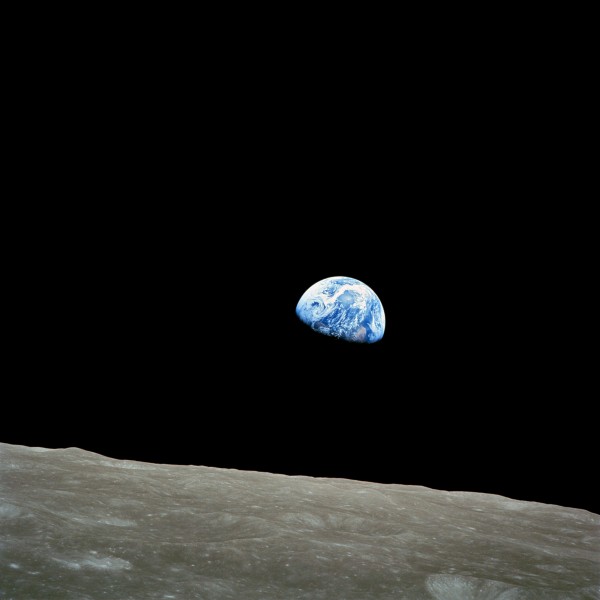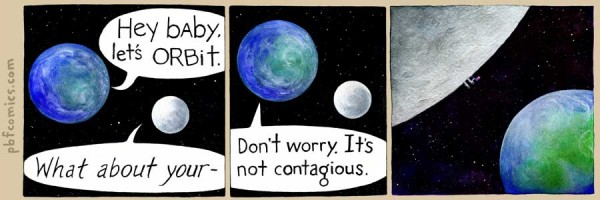"We came all this way to explore the moon, and the most important thing is that we discovered the Earth." -Astronaut Bill Anders, Pilot, Apollo 8
Humanity's ventures to the Moon have always been symbolic of the greatest things our species has ever achieved. In fact, Bill Anders, quoted above, is also famous for taking the first-ever picture of the Earth from orbit around the Moon!

Of course, most of us are more familiar with the Moon as seen from Earth. So for you to listen to, here's a bluegrass classic -- The Lonesome Moonlight Waltz -- as performed by the Bluegrass Album Band.

Of course, there are always alternatives floating around, but the Perry Bible Fellowship webcomic totally nailed it this weekend. I love the idea of the Earth trying to pick up the Moon...

You gave me HUMANS? You told me they weren't contagious! Check out the Perry Bible Fellowship archives, and have a great weekend!

Woah, PBF is back? Woooooooooo!
Outstanding.
Why hasn't the asteroid-belt formed a planet?
It's far too small. Something like 10% of the mass of the Moon in total.
Well that doesn't seem right to me. Even being small, I was under the impression gravity would have won do to the close proximity.
On another topic, I'm reading Martin Gardner's "Fads and fallacies in the name of science"; the book is almost 60 years old, but I thought I'd quote this one little bit:
"Toward the middle of the scale are theories advanced as working hypotheses, but highly debatable because of lack of sufficient data --- for example, the theory that the universe is expanding."
In the next lesson I'll quote Ptolemy to prove that the earth is the center of the universe ...
@crd2: What close proximity are you talking about? Within the asteroid belt the rocks are extremely far apart - how do you think we got all those spacecraft past on their way to the gas planets and beyond? The asteroid belt is nothing like what you see on Star Trek or other space fiction movies.
Here's a link to some info on the amount of mass in the Asteroid Belt:
http://www.wwu.edu/depts/skywise/a101_asteroids.html
According to a table on that page the total volume of material in the asteroid belt is less than 1/2 of a hundreth of a percent of the mass of Earth. The largest Asteroid, Ceres, is smaller than the 4th lsargest moon of Jupiter, 5th largest moon of Saturn, and the 4th largest moon of Uranus. And if you check the graph on the above website that shows the distribution of sizes of asteroids, you'll see how exceptional Ceres is.
Getting a handle on the vast emptiness of space takes some doing. One way to visualize it is by transferring stellar distances to your neighborhood. My apartment has a nice view of the UN in Manhattan, so I used that as a reference point for the Sun, and set my kitchen as Earth. I was stunned when I ran the numbers and discovered how tiny Earth his, where (and how fantastically small!) the moon is, and all the rest of it.
Try it sometime, and you'll see how empty Space is!
When I said 'close proximity' I was thinking on a universal scale. Thanks for the info and link. Very insightful.
HA!
I love PBF!
HAHAHA!
It could only be better if we had more moons to make for lovely orbs in the night sky.